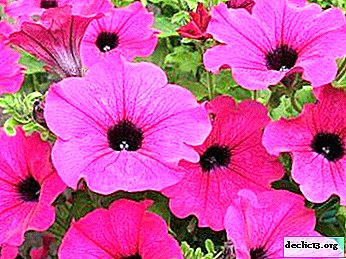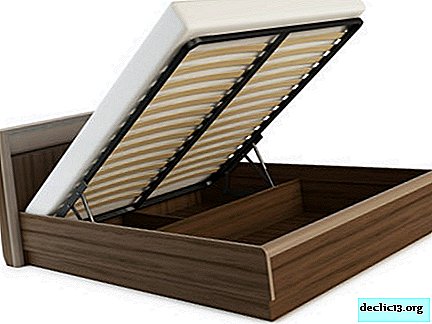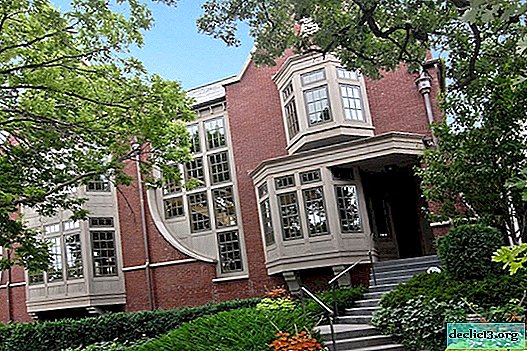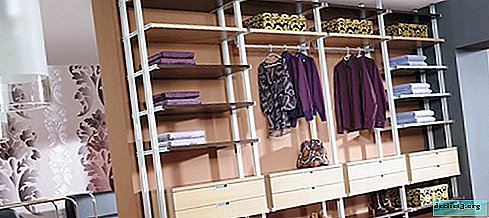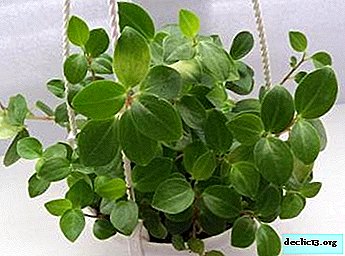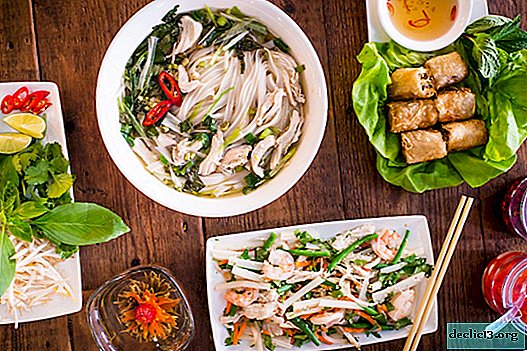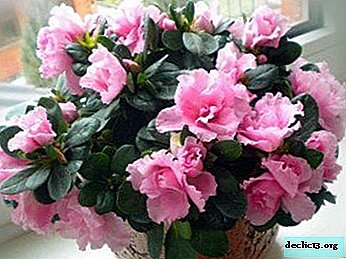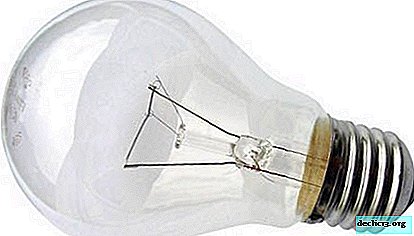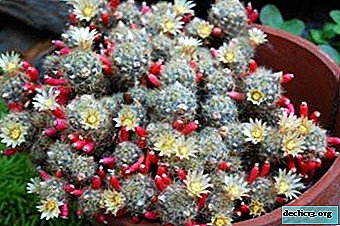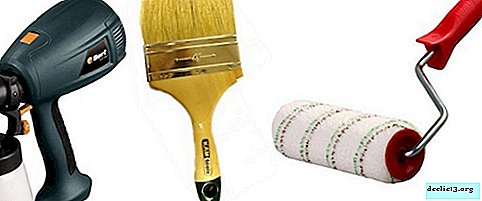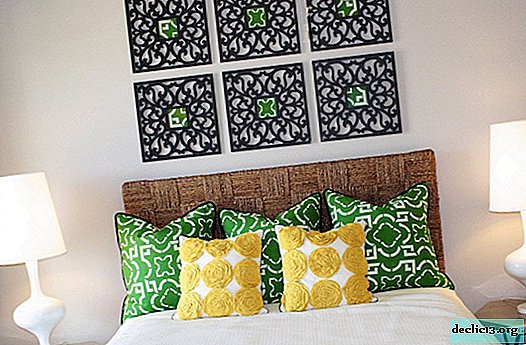Home Poinsettia Care

The article will appeal to people who are not indifferent to indoor plants, because the topic will be the care and breeding of poinsettia at home. It is often called the "Christmas star" because it blooms in late December. A bright scarlet flower appears. The forces and time spent on care are worth it in the end to get incredible beauty.
Homeland - tropical Mexico. The Aztecs used poinsetia leaves and root to combat ailments.
The plant is unpretentious in care, with one caveat. It is sometimes extremely difficult to achieve flowering in an apartment setting. Height at home reaches 35 centimeters.
Secrets of Poinsettia Care
- Priming. It is necessary to ensure the optimal composition of the soil. A flower likes a nutritious and loose earth. An ideal option is a mixture of sand, turf, leafy earth and peat in equal quantities. The acidity of the soil is slightly acidic or neutral.
- Temperature. Warm air is needed. Ideally, keep the room temperature between 20-25 degrees. Avoid drafts and sudden temperature changes that lead to leaf falling.
- Lighting. The plant needs good lighting. Sunlight, harmful to foliage, should not be exposed. You can keep it on the sunny windowsill, but in the period of the sun, move it to a dark place.
- Watering. Watering poinsettia, like dracaena, is plentiful. The main thing is that the earthen lump is well saturated with water. There should not be water in the pan. Moisten the soil as the top layer dries. If the soil dries, the leaves will crumble. Spray regularly in summer.
- Top dressing. In spring, during the growth period, feed the poinsetia once every three weeks, using granular or liquid mineral fertilizers. Until the fall, provide foliar top dressing, using fertilizers containing molybdenum, zinc and iron.
- Pruning. After flowering, rapid growth begins. In early spring, cut the stems by a third. The density and size of the trimmed and pinching shoots.
- Transfer. It is recommended to transplant a poinsetia once every 2-3 years in mid-May by the transshipment method, which provides for the preservation of the integrity of the earth coma. Choose a more spacious pot, lay the drainage layer and the prepared soil at the bottom, plant a flower, cutting off dead roots in advance. Moisten the soil thoroughly.
Poinsettia's milky juice is toxic and can lead to diarrhea, stomach irritation, vomiting, and contact dermatitis. Sensitive people may experience pollen allergies.
Video tips
Operate the flower carefully and with gloves. Wash thoroughly with soap after hand. Take care that pets do not chew on it.
Kinds

Types of poinsetia differ in the shape and color of the bracts. Exotic varieties are classified according to the shade of bracts
Under natural conditions, about a hundred varieties of the plant grow. Florists brought out a considerable number of hybrids from them. Consider the popular species.
Red poinsettia and varieties
Red bract, towering above the dark green foliage, is considered a classic of the genre. It is characteristic of the varieties of poinsetia Sonora, Olympia, Galaxy. Champion is a paler red bract, and Red veils have dark veins. Varieties of Red Diamond and Freedom boast a purely scarlet hue, and the Winter Rose is characterized by wrapped bracts.
Pink poinsettia and varieties
Varieties of pink poinsetia are numerous, often found in flower shops and private collections. Variety Maren has a milk flower garden with a pink hue. There are varieties with salmon and bright pink colors. Pink bract leaves in Da Vinci variety, in Silver Marble leaflets with white trim. Varieties of Strawberries with Cream have pink and purple foliage with rugged edges.
White poinsettia and varieties
White flower is not inferior in beauty to red and pink rivals. White varieties are characterized by special charm, restrained sophistication and nobleness. Coloring strikes a variety of shades. The White Star variety is absolutely snow-white, the White Liberty shade of ivory. Regina's white bracts have green veins.
I have listed far from all varieties of poinsetia. Florists of various ranks continue to engage in selection, and new hybrids, varieties and species appear annually.
A tradition has recently emerged to use a flower as a New Year attribute. Many families in Europe celebrate New Year with a Christmas tree and poinsettia. We still have it only a beautiful ornamental plant, ideal for the role of a gift.
Propagation of poinsetia by cuttings

Under natural conditions, poinsetia propagates by seed. In gardening, cuttings are used.
Propagated at any time of the year by stem and apical cuttings. Maximum rooting is achieved after a period of dormancy, when new buds are formed, and shoots are growing rapidly.
Cuttings with five or more internodes are ideal for propagating poinsetia. The lower cut is done under the knot. The lower leaves are recommended to be removed, and the milky juice should be washed off, otherwise the vessels will become clogged.
Step-by-step plan
- Rooted cuttings in special pots filled with a mixture of horse peat and sand. A mixture of soil with peat tablets, crushed sphagnum and perlite is also suitable. The pot is filled with the finished mixture, having previously made a drainage layer, and carefully applying it to eliminate voids.
- The cuttings of the plant are planted in a pot, dug by about two centimeters. It is recommended to moisten the soil in advance and wait until the excess liquid drains. Plant cuttings in a moist substrate, not in the dirt.
- The cuttings are covered with a transparent film or with the cut off top of a plastic bottle. The pot with seedlings is kept in a warm place. The window sill, under which the radiator of the heating system is located, is great. For the normal rooting of poinsetia, a temperature of 24 degrees is required.
The rooting duration is one month. If the procedure is carried out in the summer, make sure that the sun rays, which the croton seedlings are afraid of, do not fall on the seedlings. When it is hot outside, spray the cuttings with water.
- After a few months, transplant young plants into individual pots with a diameter of about 8 centimeters. Fill them with a fertile mixture of leafy earth, sand and peat.
- To prevent young plants from stretching, pinch the tops. So that in winter the flower has a rich red color, in the fall, feed with special fertilizers based on potassium.
Some poinsetia is not recommended to propagate. We are talking about plants purchased in the winter in the subway or on the street. Under the influence of low temperature, they freeze and lose the ability to release roots.
Video material
Breeding problems, pests, diseases
The root cause of the problems experienced by flower growers during the cultivation of poinsettia is an elementary neglect of the rules of care. The health of this wonderful flower depends on the conditions of detention and the characteristics of irrigation.
- If poinsetia leaves turn yellow and gradually fall off, this is the first sign of an improper temperature regime. Sudden changes in temperature negatively affect the flower. To avoid such problems, move the Christmas star to a room with a stable climate.
- If traces of burns appear on the leaves of the poinsettia - direct sunlight. Even cacti are very afraid of them. Move the plant immediately to a dark place. If this is not possible, create optimal conditions by means of a tight curtain.
- Improper watering is fraught with rotting of the root system. To preserve the flower, pour water from the pan when watering. If some parts of the root are affected, carefully remove them, and reduce the amount of water used in watering. Often the solution to the problem involves replacing the soil or replanting.
Pests
- Aphid. If poinsetia enters the field of view of aphids, the leaves begin to curl, turn yellow and fall. The development of the flower stops. The mechanical removal of light green insects will help to solve the problem, followed by the use of special preparations, which include Permethrin. Remove affected leaves and shoots first.
- Whitefly. Poinsetia and whitefly do considerable harm. The greenish larvae of this tiny white midge settle on the back of the leaves, feed on cell sap and leave sugary secretions. Foliage is covered with whitish spots, curls, turns yellow and falls. Eliminate the problem of spraying with insecticides for three days.
- Mealybug. It affects other indoor plants, including phalaenopsis. Affected poinsettia stops growth, discards dried and yellowed leaves. When examining the root system at the initial stage, you will find small clusters of pests, the number of which is growing rapidly. To cope with the misfortune, disinfection of the pot, cleaning and washing the root system with an insecticide solution, and subsequent transplantation into fresh soil.
Why leaves turn yellow and fall
It is fashionable and modern to give indoor plants in pots, especially for the New Year holidays. At a time when a snowstorm and frost are rampaging outside the window, such a gift is a part of the eagerly awaited summer.
Poinsetia is a popular ornamental plant that blooms in winter. It’s regrettable, but after the holidays, almost all the flowers are sent to the bin. The plant fades, discards foliage and loses its original appearance. At the same time, many owners do not even think about why the leaves turn yellow and fall.
Under optimal conditions, poinsettia blooms for a long time and pleases the owners with an excellent appearance. After flowering, a dormant period begins, which is accompanied by a discharge of leaves. This is a natural phenomenon and you should not panic.
- Errors in care also lead to unnatural falling of leaves: constant temperature changes, poor lighting, waterlogging or drying out of the soil, excessively dry air. To avoid problems, keep the plant warm, regularly feed and spray.
- The worst enemy of poinsettia is cold. Even a short stay in the cold has a detrimental effect on the plant. It begins with falling leaves, and ends with the death of the roots. With a timely reaction, short-term drought is fearless.
- Poinsetia is characterized by a poor reaction to increased air dryness and drafts, which can cause various diseases. Insects often become the culprits of foliage dumping.
Problems with yellowing and discarding of foliage are usually associated with improper care. If you carefully listen to the recommendations set out at the beginning of the material, the punch is in order.
How to make a poinsettia blossom

In apartment conditions, without observing a special regime of detention, flowering of poinsetia is difficult. For the appearance of flower buds, it is necessary to create conditions close to the natural environment.
In the homeland, poinsetia begins to bloom after 60 days of daylight, lasting 10 hours. In a living room, such conditions are created artificially.
The first way - protection from light
From the end of September, cover the poinsettia daily with an opaque film or a cardboard box. In such conditions, keep the flower from six in the evening to eight in the morning.
The second way - a natural change in light and darkness
In the fall, place the flower pot in a non-residential building or heated greenhouse. In any of these places should be no natural light. During this period of poinsettia, a fairly short daylight hours.
Method Three - Using a Lightproof Barrier
In the room, the finest euphorbia is constantly illuminated by various electrical devices. Even a small amount of light that does not meet the norm of daylight hours can interfere with the flowering of poinsetia. If the flower pot is on the windowsill, blackout curtains will protect it from artificial light. Twitch them daily after six in the evening.
During the entire period of the poinsettia, pour warm, settled water. Apply special fertilizers weekly. Follow these steps until the beginning of December, after the flower, transfer to a well-lit window sill. After some time, buds will appear, and a little later bracts of amazing beauty.

